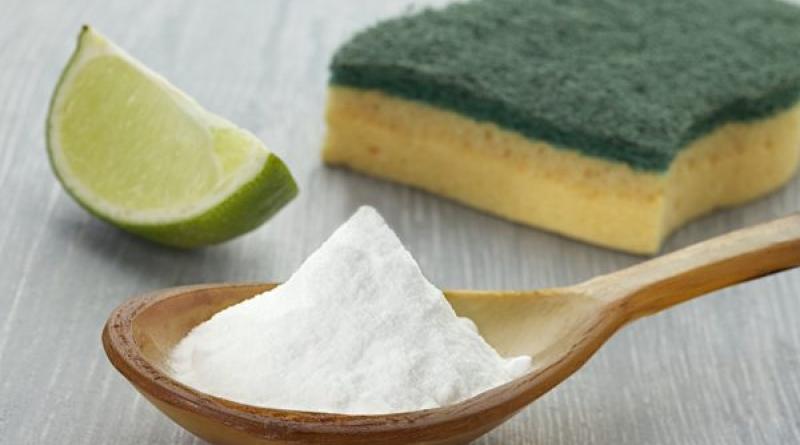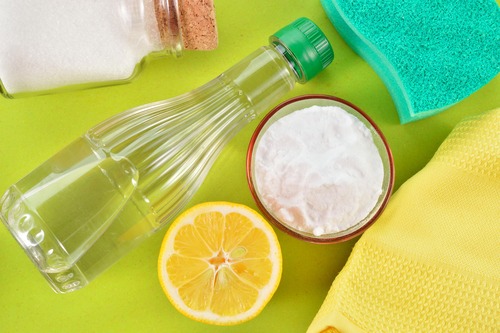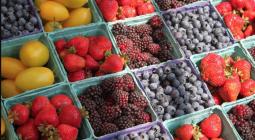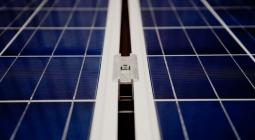Zero-Waste Cleaning and Laundry Tips.

Similar to a forest ecosystem, zero-waste cleaning systems produce nothing that can’t be reused and repurposed. Waste to one system is food for another. This concept is inspiring to many people wishing to make their lives more sustainable and is gaining in popularity.
Household cleaners and laundry products are a common source of waste in many households. In addition, many store-bought cleaning products contain a variety of toxins. Living a zero-waste lifestylealso includes considering the waste associated with a product before it arrives on the store shelves and the impact it will have in your home and beyond.
This article contains affiliate links that help fund our Recycling Directory, the most comprehensive in North America
Zero-Waste Cleaning at Home
Detoxifying Your Home
Unfortunately, few of the chemicals in household cleaning products have been well tested, and some widely used chemicals are shown to be harmful. The federal government has taken primarily an “innocent until proven guilty” approach, and the Environmental Protection Agency (EPA) has very rarely required testing on the chemicals used in commerce. The EPA may only regulate or ban a chemical once it is determined to create “unreasonable risk to human health or the environment.”
In addition, product labels are difficult to decipher and an advanced degree in chemistry may seem necessary. Many product labels are misleading, as the word natural is widely used, even when products contain a toxic brew. The health impacts vary, but can include anything from eye irritation to reproductive issues to cancer. If you wish to get rid of potentially toxic cleaners, follow safe guidelines for disposal and read on to learn about safer alternatives.
Homemade Cleaning Supplies

Making your own cleaning products gives you greater control of the ingredients that go into them, therefore safeguarding your home. To minimize packaging waste, reuse spray bottles and jars to store your homemade cleaning potions.
Just a few basic ingredients can get your started making a variety of zero waste cleaning products. These staple ingredients include:
- baking soda
- borax
- washing soda
- lemon juice
- citric acid
- white vinegar
- hydrogen peroxide
- castile soap
- essential oils
Lemon, vinegar and baking soda are among our favorites to use in our home. Some of these products work well independently, such as using baking soda for scrubbing jobs or 1 part vinegar to 1 part water in a spray bottle to clean windows. Whenever possible, buy these ingredients in the bulk section of stores, bringing your own reusable packaging to reduce waste.
Instead of using air freshener products that contain synthetic scents, ventilate your home or use baking soda to remove odors. Use essential oils to scent the home with a diffuser. This significantly reduces waste, as essential oils are highly concentrated and a small bottle can last for months.
Using your own rags from repurposed materials is relatively easy as well. Make cotton rags by cutting worn-out clothing, towels, blankets, sheets, or cloth diapers into 18 inch-by-18 inch squares, after removing zippers, buttons, and hems.
Repurposing Cleaning Tools
Cut the corner off of old kitchen sponges (so you don’t confuse them with dish sponges) to clean less-sanitary or messy areas of the home that you might otherwise use paper towels to clean up. Old toothbrushes make great cleaning tools for corners and crevices, but again make sure they don’t get confused with new ones.
Tough on Germs
It is commonly thought that more-natural products are not effective in actually killing germs, but this is not the case. An easy way to naturally disinfect is with vinegar and hydrogen peroxide, killing almost all Salmonella, Shigella, and E-coli bacteria. Although both are powerful at disinfecting on their own, their strength is multiplied when they join forces.
Keep the vinegar in one spray bottle and the 3% hydrogen peroxide in an opaque bottle, because peroxide breaks down in light. Do not mix the vinegar and the peroxide in the same bottle, as it isn’t as effective. Spray one, then the other, on surfaces to disinfect. The order in which you spray doesn’t matter.
Microfiber Antibacterial Cleaning
When moist, these antibacterial cleaning cloths and mop pads remove up to 99 percent of bacteria (including E. coli and listeria) without requiring cleaning solutions, when following proper care and use instructions. This is because extremely small particles of silver are woven into the cloth. The microfiber structure traps almost all bacteria on smooth surfaces, while the silver actually kills the germs over the next few hours. Norwex and ecloth both make such cleaning cloths, resulting in a cleaner home with fewer cleaning products.
Natural Laundry Care
Avoid Dryer Sheets

Research has found that dryer vents can emit 25 volatile organic compounds (VOCs) when both scented laundry detergent and dryer sheets are used, including seven VOCs classified as hazardous air pollutants. This is especially concerning when dryers don’t vent to the outside or are blocked, resulting in indoor air pollution.
Whenever possible, forgo laundry sheets. To naturally scent your laundry, add a few drops of essential oil on a damp rag and throw it in the dryer with laundry. Use dryer balls to reduce drying time, wrinkles and static, and make sure your dryer vent is venting properly to the outside.
Use Essential Oils for Fragrance
The laundry room is commonly one of the most toxic rooms in the home. Although they make the clothes smell good, scented products can contain VOCs. In fact, the term “fragrance” can refer to a combination of several hundred laundry chemicals, including many that are hazardous.
Surprisingly, many of the products that are labeled “unscented” still contain such fragrances. Using homemade laundry detergent is a great solution, with optional essential oils to naturally scent your clothes.
Beware of Laundry Detergent
Laundry detergents are commonly derived from petrochemicals and have synthetic fragrances. Most detergent companies add optical brighteners to formulas to emit blue light, making whites appear whiter by actually tricking the eye. By design, optical brighteners stay in clothes after washing, which can cause skin irritation. Unfortunately, they decompose fairly slowly and can be toxic to marine life. Fabric softeners likewise are designed to remain in fabrics and do not fully rinse out, which means lingering chemicals are in contact with skin.
Although product labels are often incomplete, there are certain chemicals that are known to be harmful. Whenever possible, avoid buying laundry detergents with harmful ingredients and avoid products with “warning,” “danger,” or “poison” on the label. Also, substitute fabric softener for 1/2 cup of vinegar in the rinse cycle.
Cut Energy Use
An estimated 75 percent of the energy used to wash a load of laundry is for heating the water. Using cold water to launder clothes and line drying them saves both money and energy, while extending the life of your clothes. This is because heat breaks down the dyes and causes some clothes to shrink.
Living zero waste won’t happen overnight, but it will likely start where you spend each and every night — at home.
What zero-waste cleaning products do you use in your home? Share your favorites with the community in the Earthling Forum.
Featured image courtesy of JPC-PROD / Shutterstock
Editor’s note: Originally published on May 18, 2016, this article was updated in March 2019.
19 March 2019





